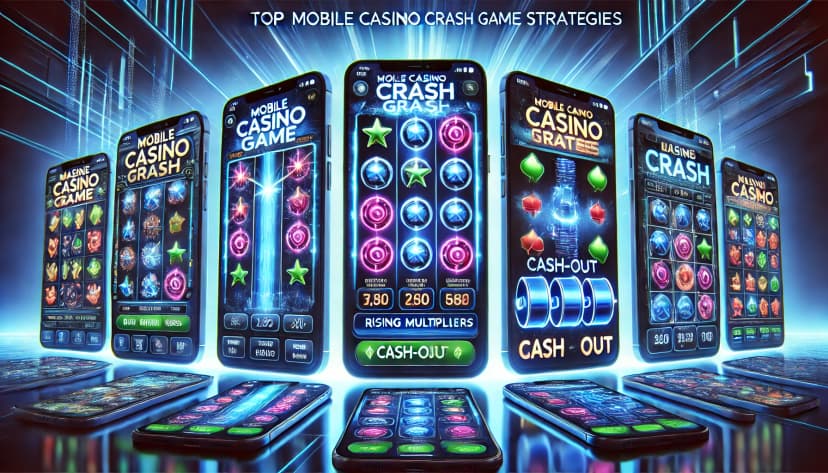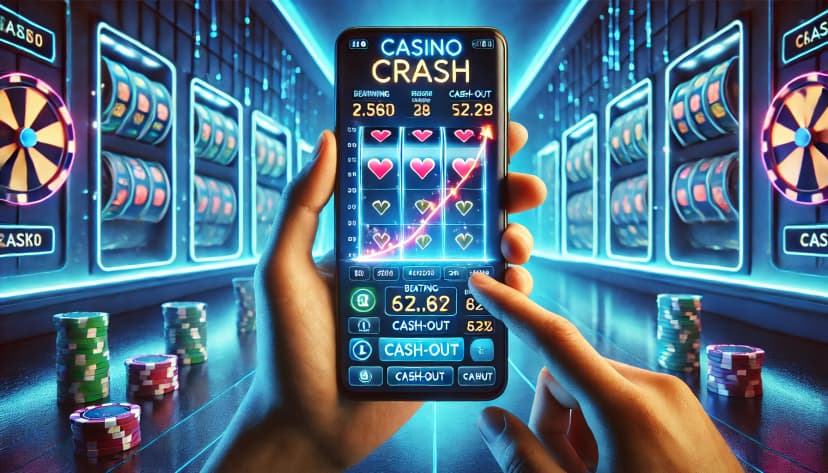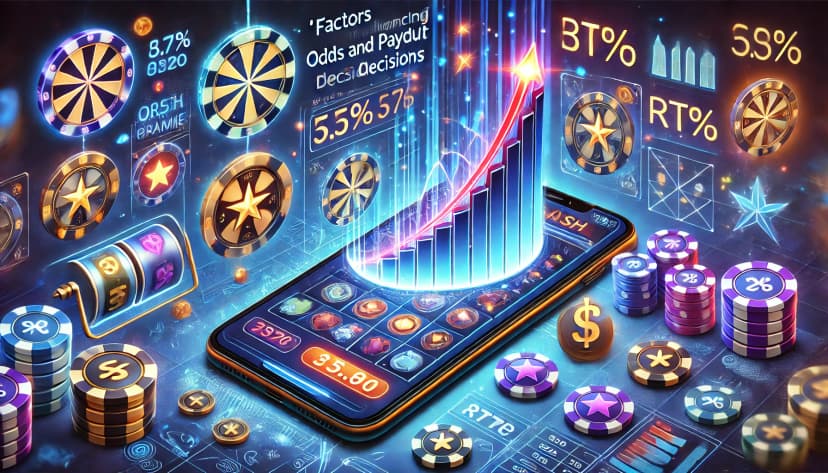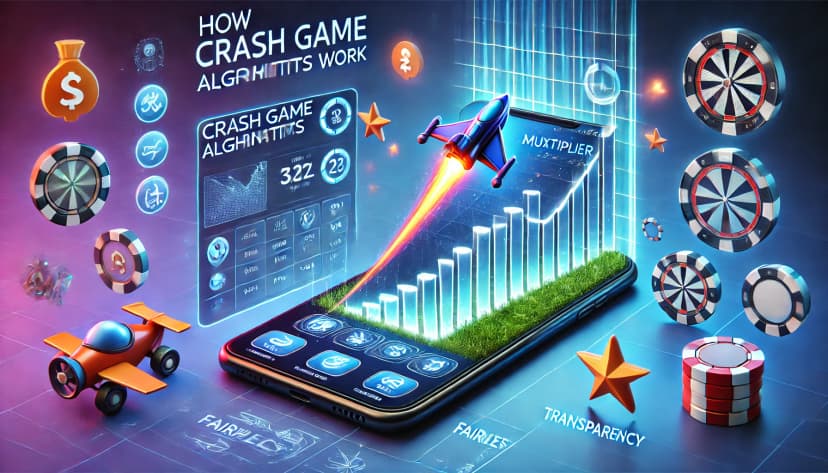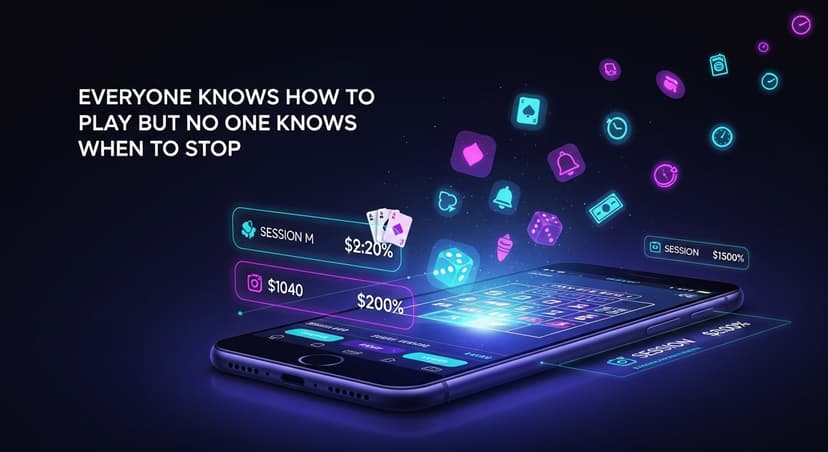Crash Games vs. Table Games
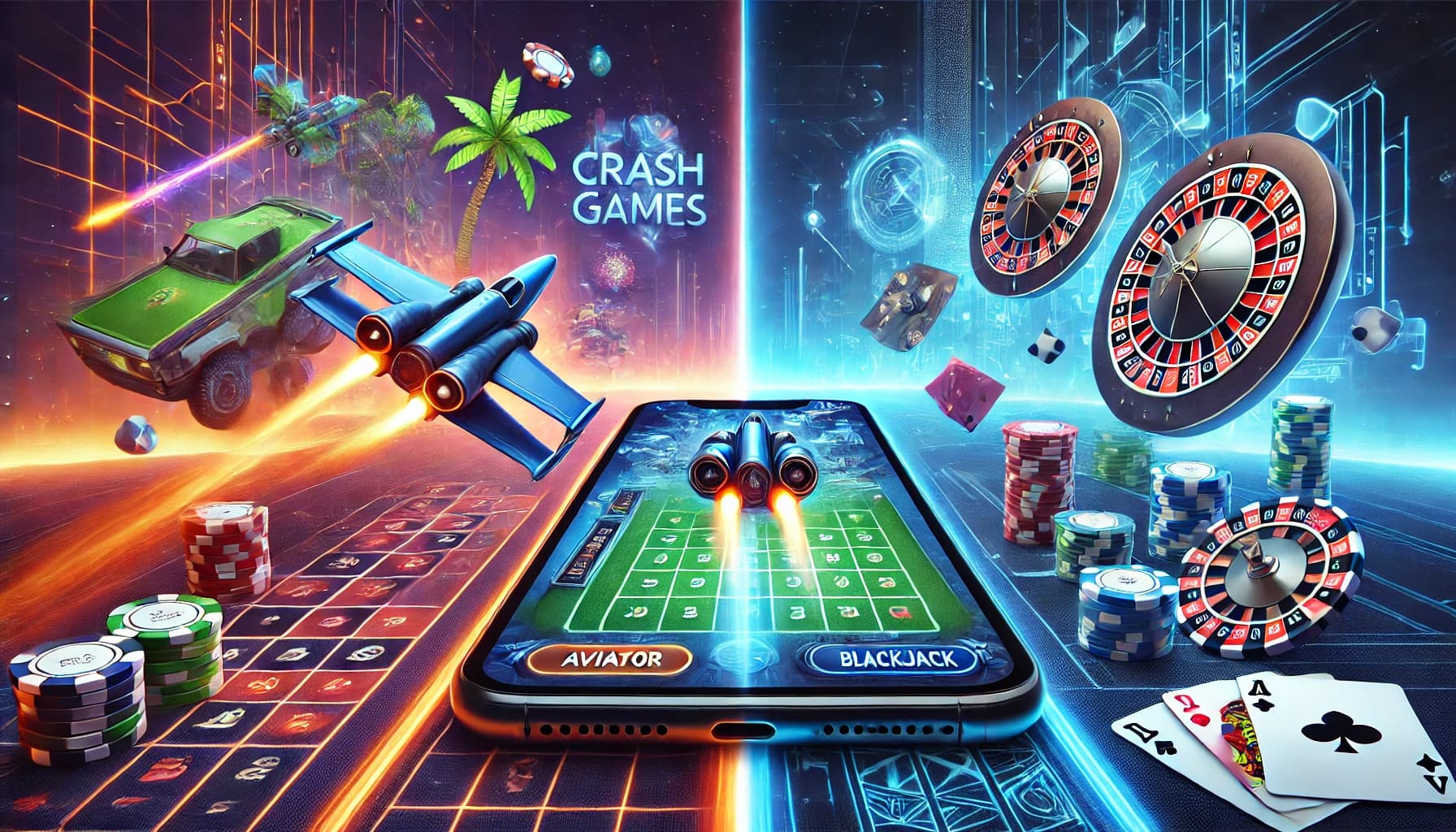
Crash games and table games represent two distinct and exciting categories in the world of casino gaming. While crash games offer fast-paced action and quick decision-making, table games like blackjack, poker, and roulette provide strategic depth and a classic casino experience. Comparing these two types of games helps players understand their unique mechanics, benefits, and which might better suit their preferences. In this article, we’ll explore the key differences, pros and cons, and scenarios where each game type shines, helping you make informed decisions for your next casino session.
What Are Crash Games at Canadian Casinos?
Crash games are a unique type of casino game that combines simplicity with high-stakes excitement. In these games, players place bets and watch as a multiplier increases, representing their potential winnings. The challenge lies in cashing out before the multiplier crashes, as waiting too long results in losing the bet. This fast-paced, high-risk, high-reward nature makes crash games a thrilling choice for players seeking adrenaline-filled gameplay. Their straightforward mechanics and quick rounds have also made them particularly popular among mobile casino players, who value convenience and instant gratification. Our experts at MobileCasinoRank provide trusted reviews of top-rated mobile casinos to help you enjoy crash games.
Classic Table Games in Canada
Table games are the cornerstone of traditional land-based and online casino gaming, encompassing Canadian favourites like blackjack, roulette, and poker. These games are known for their strategic depth, requiring players to make calculated decisions based on skill, probability, and experience. Additionally, table games often feature a social aspect, with live dealers and opportunities to interact with other players, adding to their appeal. Their enduring popularity is a testament to their rich history and the engaging, immersive experiences they provide, making them a staple in both physical and online casinos for decades.
Crash vs. Table Games: Key Differences for Canadian Players
Crash games and table games differ significantly in gameplay, pacing, and strategy. While crash games offer fast-paced, solo experiences, table games emphasize structured play, strategic depth, and social interaction.
How Do They Play Differently?
Crash games are characterized by instant, quick rounds where players must make split-second decisions to cash out before the multiplier crashes. In contrast, table games like blackjack or poker follow structured, rule-based gameplay, offering a more methodical and strategic experience. This fundamental difference makes crash games more appealing for those seeking fast-paced thrills, while table games cater to players who enjoy depth and complexity.
Strategy and Skill: What's Involved?
The strategies for crash games revolve around timing and risk management, requiring players to decide the optimal moment to cash out. Table games, on the other hand, demand a higher level of skill and strategic thinking. Success in games like poker or blackjack often depends on a deep understanding of rules, probabilities, and even psychology, making them ideal for players who enjoy a mental challenge.
Pacing and Your Gaming Experience
Crash games deliver fast-paced, high-energy action that appeals to players looking for quick entertainment and adrenaline. In contrast, table games are slower and more methodical, allowing for thoughtful decision-making and extended gameplay. This difference in pacing makes crash games suitable for players who prefer instant gratification, while table games attract those who enjoy taking their time to strategize.
Social Interaction
Table games often feature live dealers and multiplayer setups, fostering a social and interactive environment that many players find engaging. Whether competing against others in poker or interacting with a dealer in mobile roulette games, the social aspects of table games add a layer of enjoyment. On the other hand, crash games are typically solo experiences, focusing on individual decision-making without external interaction, which can appeal to players seeking a more solitary and focused gaming session.

Pros and Cons of Crash Games and Table Games
Crash games and table games each offer unique advantages and disadvantages, catering to different player preferences. Here’s a simplified comparison to help you decide which suits your gaming style best:
| 🎮 Game Type | ✅ Pros | ❌ Cons |
|---|---|---|
| Crash Games | Simple and easy to learn | High volatility |
| Fast-paced rounds | Limited strategic depth | |
| Highly accessible on mobile platforms | ||
| Table Games | Rich in strategic opportunities | Slower gameplay |
| Social interaction with dealers/players | More complex rules to learn | |
| Wide variety of games available |
This clear breakdown highlights the strengths and weaknesses of each game type, helping you choose based on your gaming priorities and preferences.
Which One Should You Choose?
Deciding between crash games and table games depends on your personal preferences and gaming goals. Each game type offers unique experiences, and understanding your priorities can help you make the best choice. Below, we explore key factors to consider and scenarios where each game shines.
Factors to Consider
When choosing between a variety of crash games and table games, consider what matters most to you:
- Speed and Pacing: If you prefer fast rounds and instant results, crash games are a better fit. Table games are ideal for those who enjoy slower, more methodical play.
- Strategy and Skill: Crash games rely on timing and quick decisions, while table games require deeper strategic thinking and skill development.
- Social Interaction: Table games often include live dealers and multiplayer features, making them great for social players. Crash games are more suited to those who prefer solo gameplay.
- Bankroll and Risk Tolerance: Crash games’ high volatility may appeal to risk-takers, while table games allow for more controlled, strategic bankroll management.
Ideal Scenarios for Each Game Type
- When Crash Games Are Better: Crash games are perfect for players seeking quick, high-energy action with simple mechanics. They’re ideal for mobile gamers who enjoy on-the-go sessions and don’t want to commit to long rounds.
- When Table Games Are Better: Table games are the top choice for players who enjoy strategy, skill-based challenges, and a social casino atmosphere. They’re great for those willing to invest time into mastering the rules and tactics of games like poker, blackjack, or roulette.
By weighing these factors, you can choose the game type that aligns best with your preferences and enjoy the most rewarding experience.
Mobile Table Games to Try
Mobile table games bring the classic casino experience to the convenience of your smartphone or tablet, combining strategic depth with user-friendly interfaces. These games are perfect for players who enjoy skill-based challenges and engaging gameplay. With intuitive controls and seamless designs, mobile table games ensure an immersive experience no matter where you are. Here are some of the most popular mobile table games to try:
- Blackjack: A timeless classic where strategy meets luck, blackjack is perfect for players looking to outsmart the dealer and achieve the coveted 21.
- Roulette: Spin the wheel and test your luck with this iconic game of chance, featuring multiple betting options and exciting payouts.
- Poker: From Texas Hold’em to Omaha, mobile poker games offer a variety of formats for players who enjoy competing against others or testing their skills in tournaments.
- Baccarat: A straightforward yet thrilling game where players bet on the player, banker, or a tie, making it a favorite among both casual and experienced gamers.
These table games are readily available on many top mobile casinos, offering hours of entertainment and the opportunity to refine your strategies while on the go.
Conclusion
Crash games and table games offer two distinct experiences, each with its own unique appeal. While crash games are fast-paced and simple, ideal for players who enjoy quick and thrilling rounds, table games provide strategic depth and social engagement, making them perfect for those seeking a more immersive casino experience. By understanding the key differences and considering your own preferences for speed, strategy, and interaction, you can determine which game type suits you best. Whether you’re drawn to the excitement of crash games or the classic charm of table games, explore your options on MobileCasinoRank and elevate your gaming journey today.
FAQ
What are crash games, and how do they differ from traditional casino games?
Crash games offer a fast-paced betting experience on a rising multiplier; players must cash out before the inevitable "crash." Traditional casino games, such as blackjack, poker, and roulette, are more structured and emphasize strategy, established rules, and sometimes social interaction, providing a slower, more deliberate gaming experience. Remember to gamble responsibly and set limits.
Which type of game is better: crash games or classic casino games?
The "better" game depends entirely on your personal preferences. If you enjoy quick, high-stakes rounds with the potential for rapid wins (or losses), crash games might be your ideal choice. However, if you prefer strategic gameplay, established rules, and a more social atmosphere, classic casino games are likely a better fit. Always play responsibly and within your budget.
Are crash games better optimized for mobile devices compared to table games?
Crash games are exceptionally popular on mobile devices due to their fast-paced rounds and straightforward mechanics, making them perfect for gaming on the go in Canada. While table games also function well on mobile platforms, they often involve more intricate interactions that may benefit from larger screens or longer play sessions. Remember to take breaks and gamble responsibly on your mobile.
What strategies are most effective for crash games and traditional casino games?
In crash games, effective strategies include setting predetermined cash-out targets and implementing sound bankroll management techniques. For traditional casino games, strategies vary depending on the game. For example, card counting can be used in blackjack, or betting systems like the Martingale can be applied in roulette. Always remember that no strategy guarantees a win, and responsible gambling is paramount.
Can I find both crash games and table games at the same online casino in Canada?
Yes, the vast majority of online casinos available to players in Canada offer a diverse selection of both crash games and traditional table games. This allows you to easily switch between the high-octane action of crash games and the more strategic gameplay of table games, depending on your mood and preferences. Be sure to check the casino's licensing and responsible gambling resources before playing.

